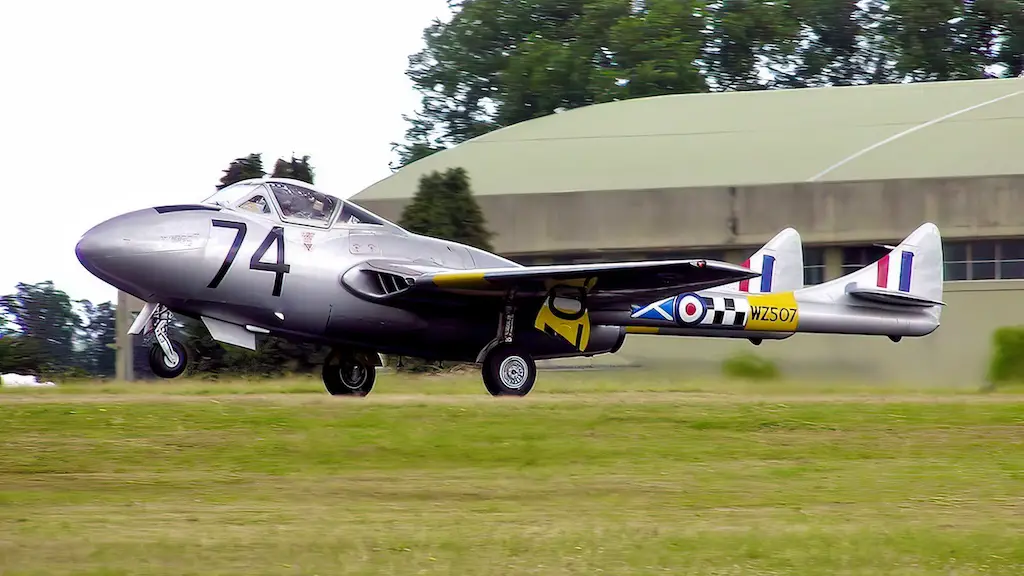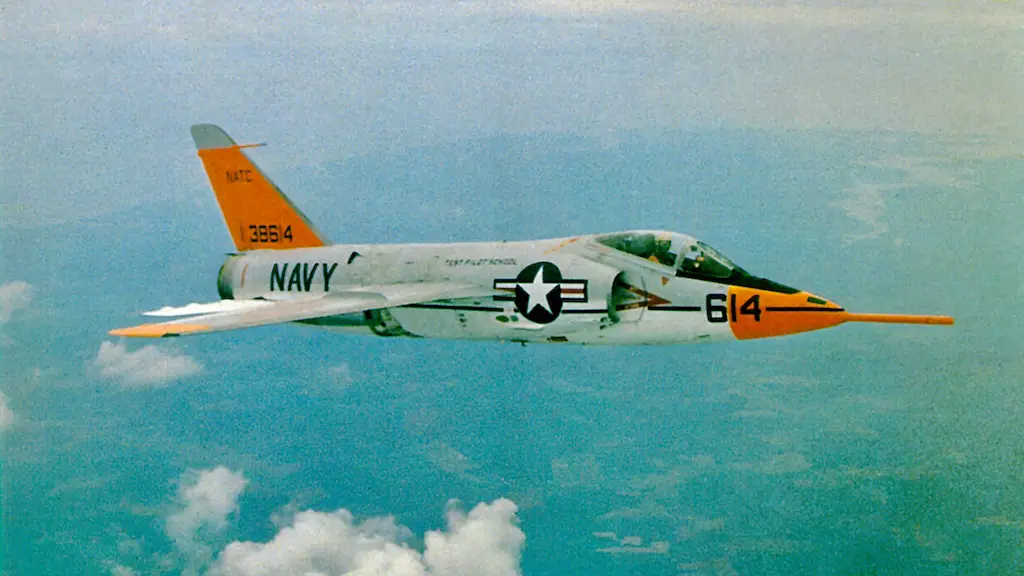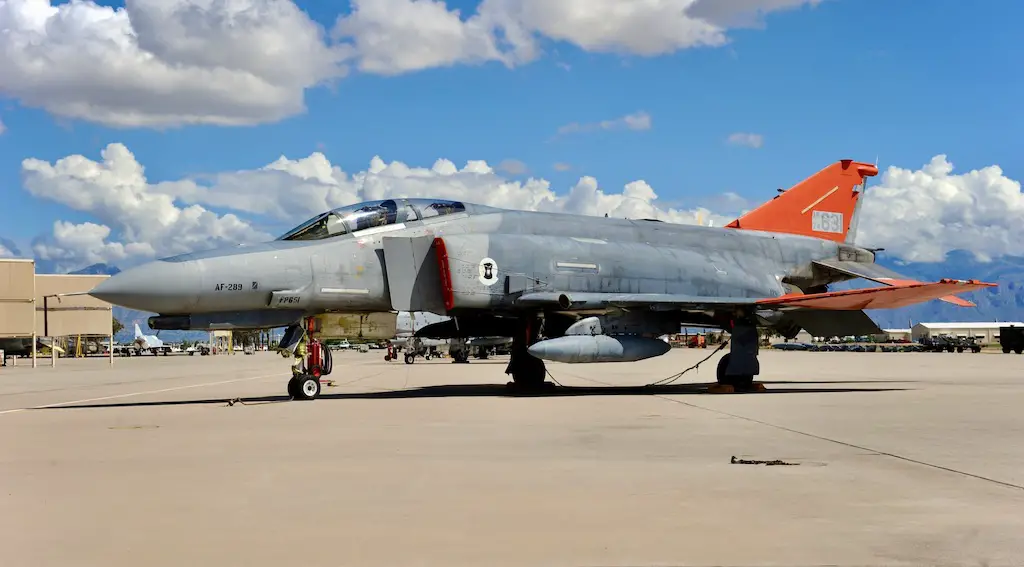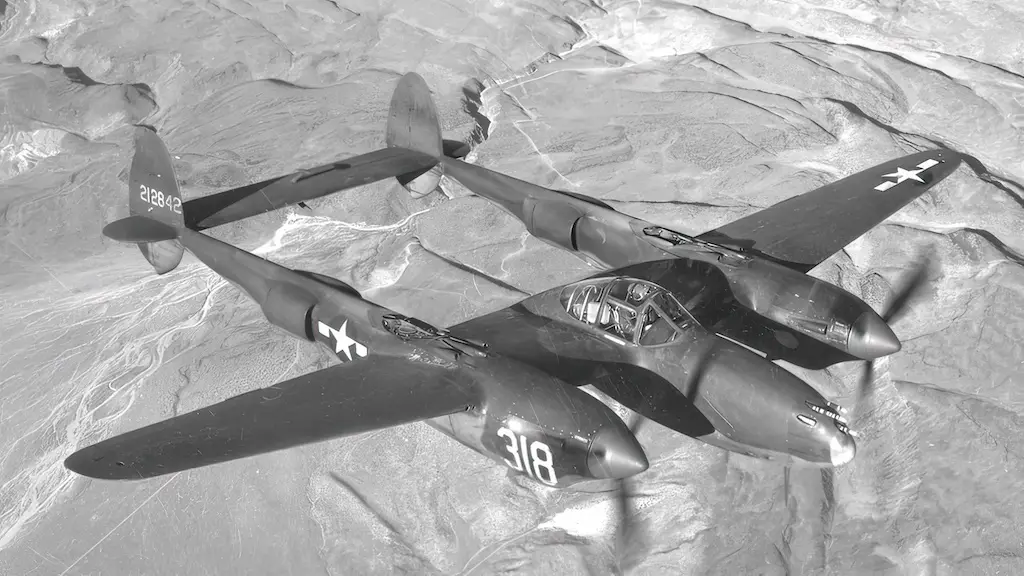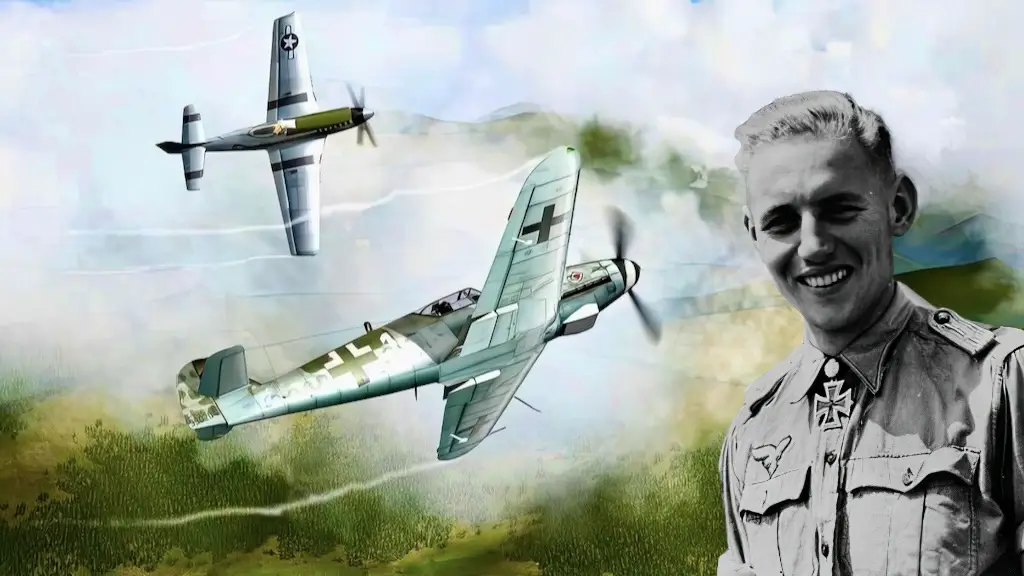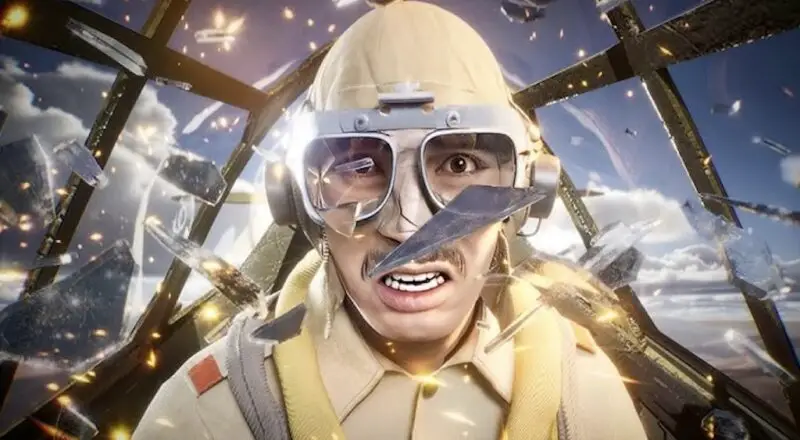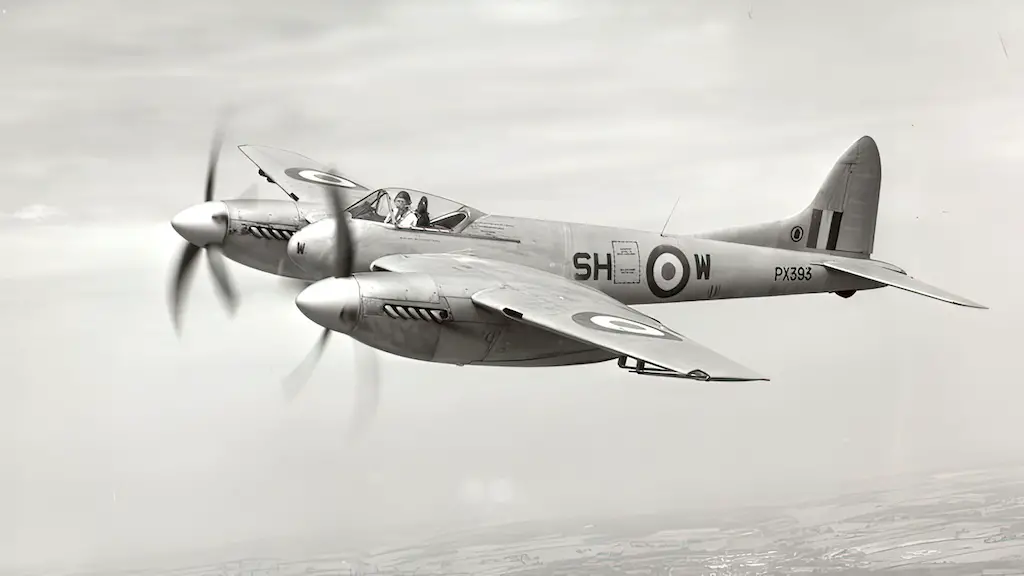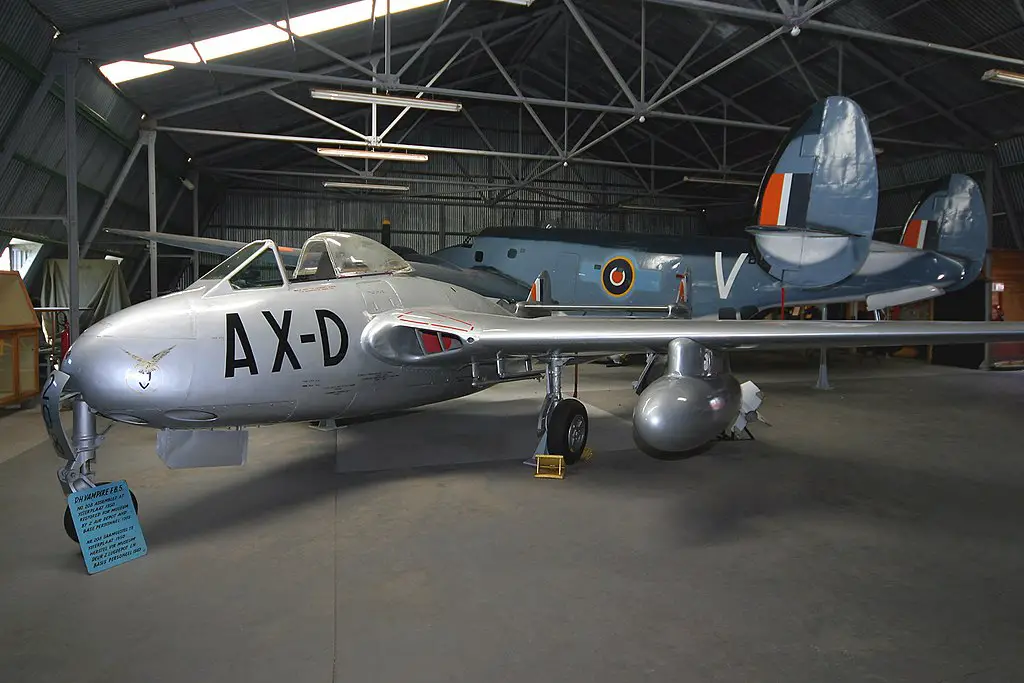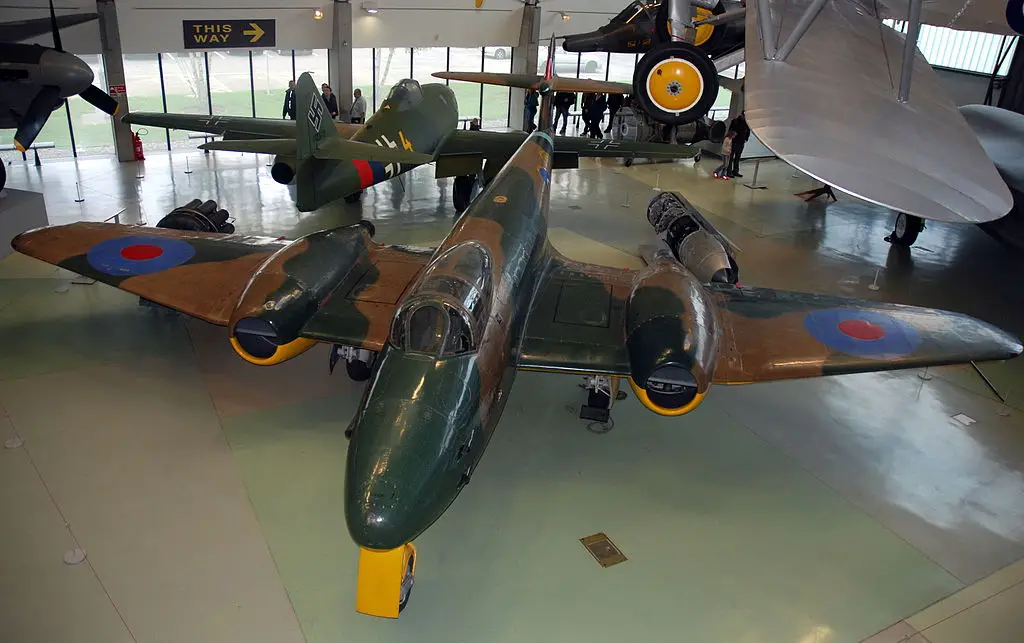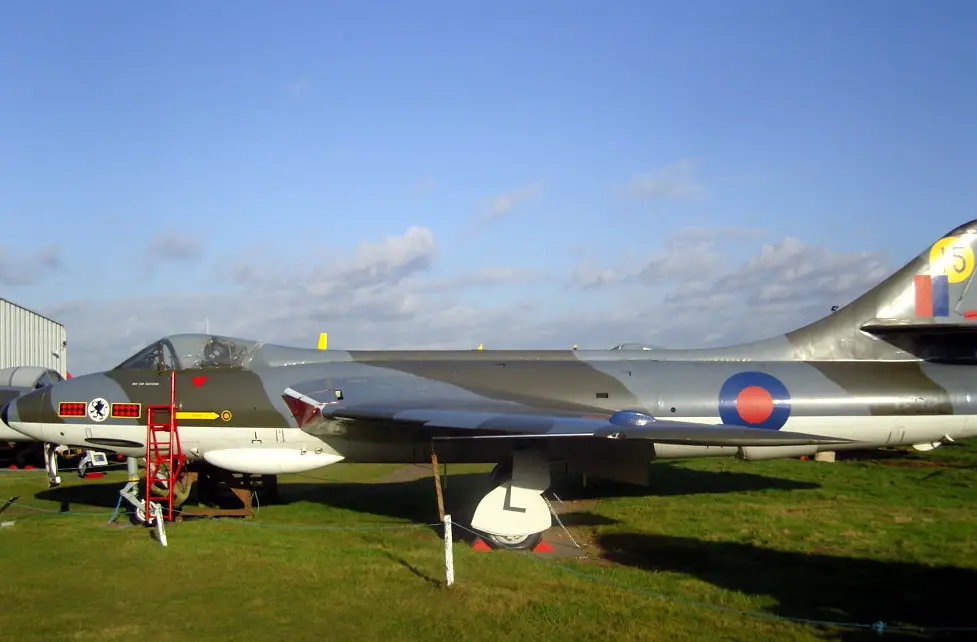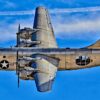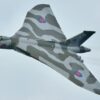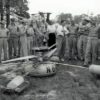Development of the Vampire began in 1941 exploiting the revolutionary innovation of jet propulsion. The innovative jet fighter was first flown in September 1943, and was the first jet fighter to enter service with the Royal Air Force just after the Second World War.
The Vampire was faster than most other early jet fighters thanks to its streamlined design and swept-wing shape, which reduced drag and increased speed. It was also very maneuverable, with a maximum speed of over 500 mph and a strong climb performance. It was also the first jet aircraft to take off and land from an aircraft carrier. The Vampire was a well-liked option among air forces all over the globe due to its rugged design and simplicity of maintenance. It was a major turning point in the development of jet-powered aircraft and played a significant part in the early Cold War.
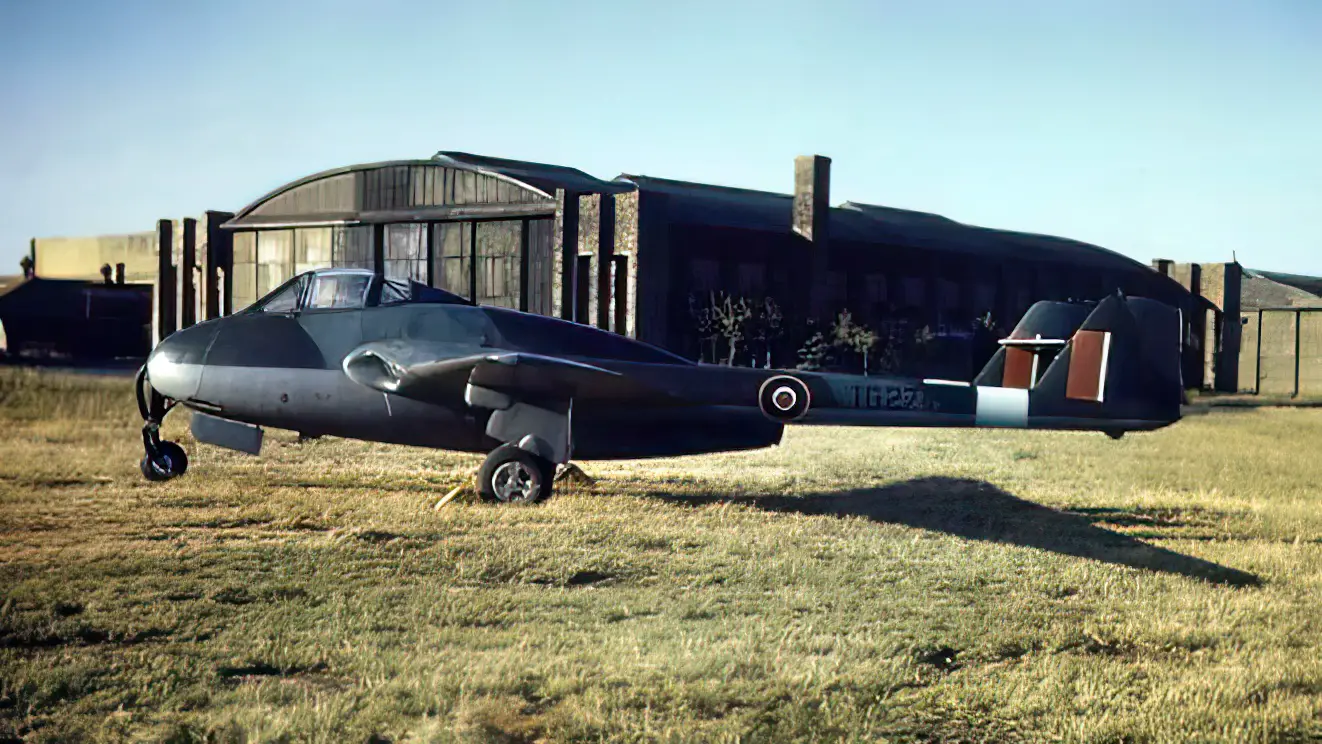
Development
The de Havilland Vampire was designed as a jet fighter for the British Royal Air Force in the late 1940s (RAF). Son of the company’s creator, Geoffrey de Havilland Jr., and his team at de Havilland’s Hatfield facility designed it. The Vampire was intended to be a smaller, less complex alternative to the earlier Gloster Meteor.
From the company’s design studies, it was decided to use a single-engine, twin-boom aircraft, powered by the Halford H.1 turbojet (later produced as the Goblin) The all-metal construction except for the forward portion of the fuselage housing the pilot’s pressurized cockpit, which was made of wood.
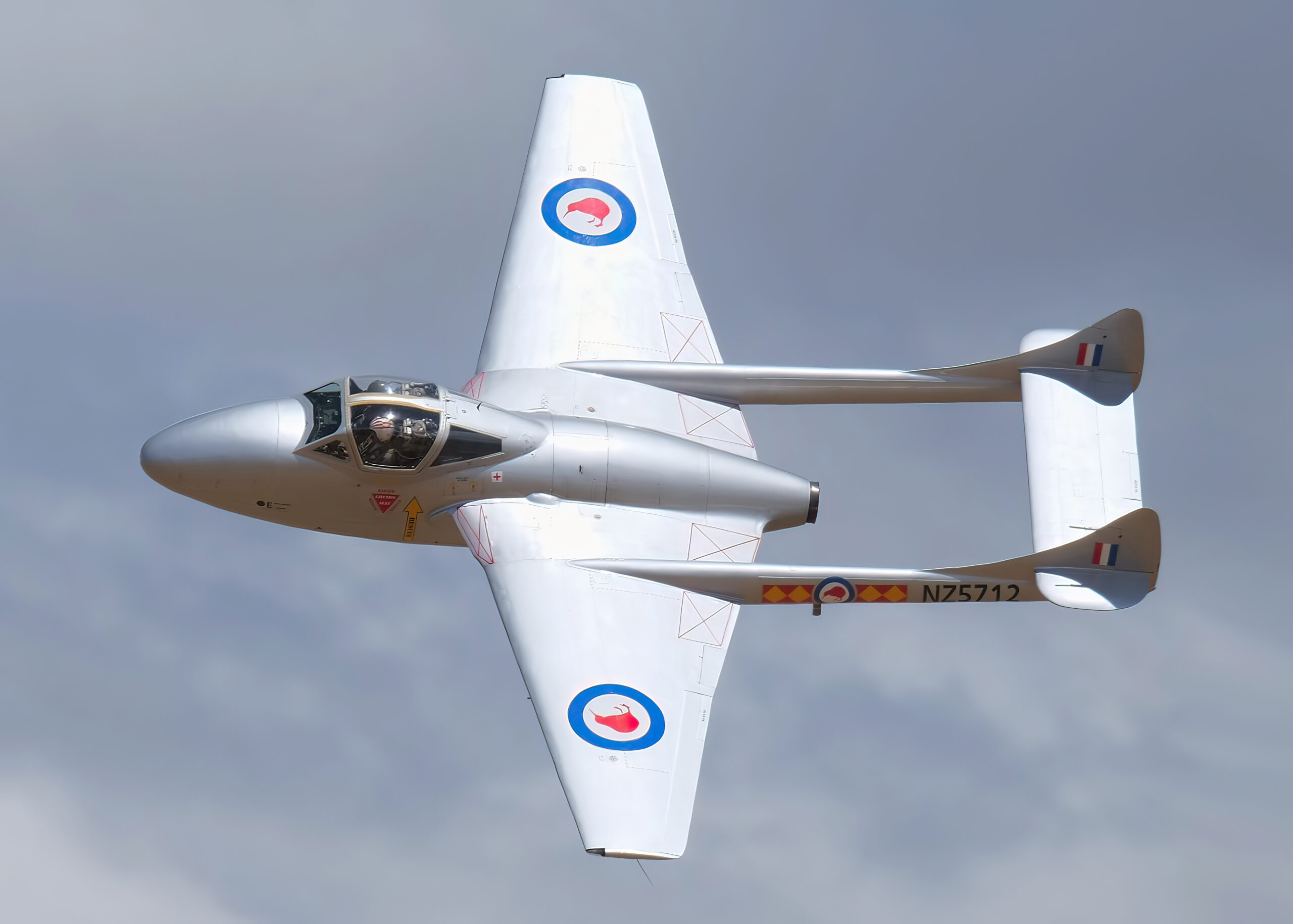
The design of the Vampire was finalized in 1943, and the first prototype took flight in September 1945. The aircraft proved highly maneuverable and straightforward to fly, and the RAF quickly began producing it. As a jet trainer aircraft, the Vampire was also exported to Canada, Australia, and Switzerland, among other nations.
The Vampire has evolved into numerous variants throughout its operational lifespan, including fighter bomber, ground attack, and night fighter models. It also served as the foundation for several other de Havilland aircraft, including the Sea Vampire, a carrier-based variant, and the Venom, a larger and more advanced jet fighter.
Flying fast, but not flying far.
The relatively short range of the Vampire rendered it unsuitable for long-distance missions. The cockpit of the aircraft was also considered to be quite cramped, which could make extended flights uncomfortable for the pilots. In addition, the Vampire’s armament consisted of only four 20mm Hispano-Suiza cannons, which made it a bit underpowered.
Another area for improvement with the Vampire was its relatively poor performance at altitude. The aircraft’s powerplant was optimized for high-speed flight at medium to high altitudes, despite the aircraft’s excellent maneuverability and speed. This rendered the Vampire less effective in ground attack roles and when engaging low-altitude targets.
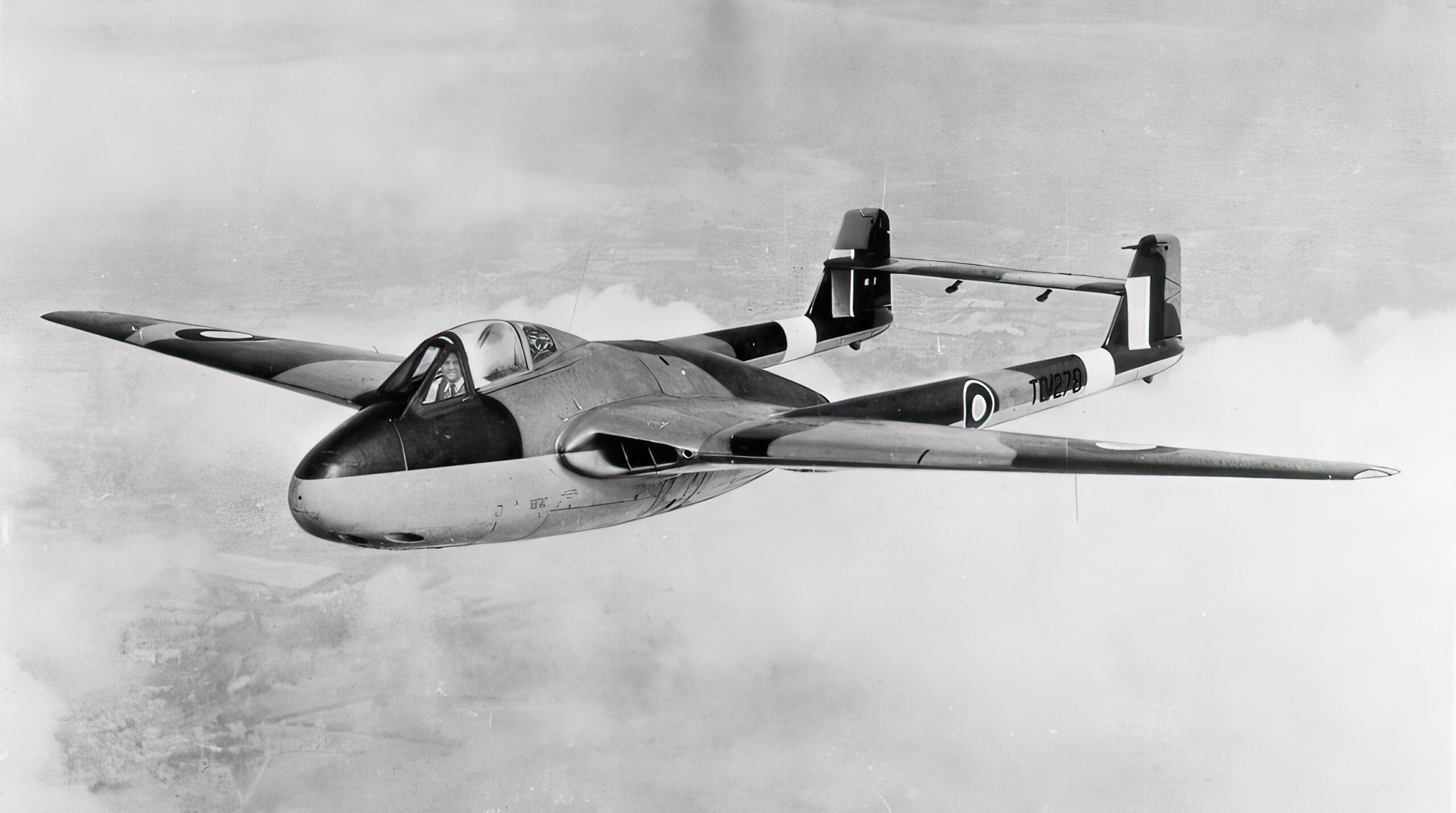
Additionally, the Vampire had reliability issues, particularly with its earlier models. Specifically, the aircraft’s engine may be susceptible to flameouts, which could be hazardous for pilots during takeoff and landing. Later models of the Vampire partially addressed these issues to a degree, but they persisted throughout the aircraft’s service.
Mid-Air Vampire Collision
The “Mid-Air Vampire Collision” is one of the most well-known tales concerning the de Havilland Vampire. During an air demonstration in England in 1953, two Vampire jet fighters collided in midair while performing synchronized aerobatics. The collision caused both aircraft to disintegrate, showering the crowd below with debris.
The crash miraculously left no one on the ground severely injured, but both pilots perished. The incident was captured on film and became one of the most extensively viewed aviation accidents. The accident led to demands for increased safety measures at air shows and a heightened emphasis on pilot training and aircraft safety.
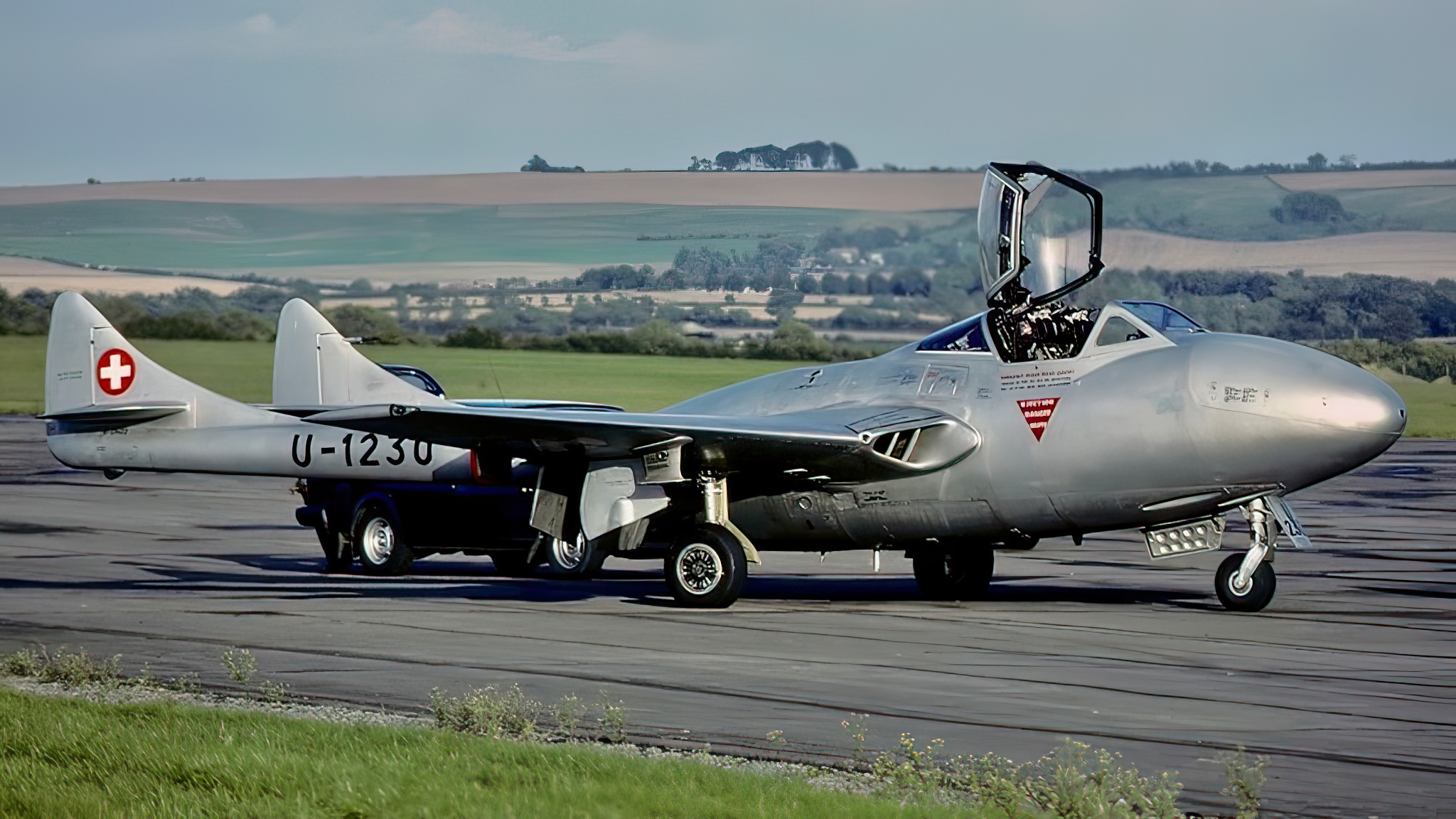
Battles Fought
The Vampire saw extensive combat use during the Korean War, predominantly as a ground attack aircraft. It was employed in numerous bombing and strafing missions against North Korean and Chinese targets, and its destruction of multiple hostile positions and vehicles was credited. The aircraft’s speed and maneuverability made it highly effective in these roles, and it played a crucial role in assisting ground troops and conducting reconnaissance missions.
During the 1950s and 1960s, the Vampire participated in multiple regional conflicts in the Middle East, predominantly supporting ground troops and air defense roles. During the 1956 Suez Crisis, Israeli forces utilized it to defend Israeli airspace against Egyptian air attacks.
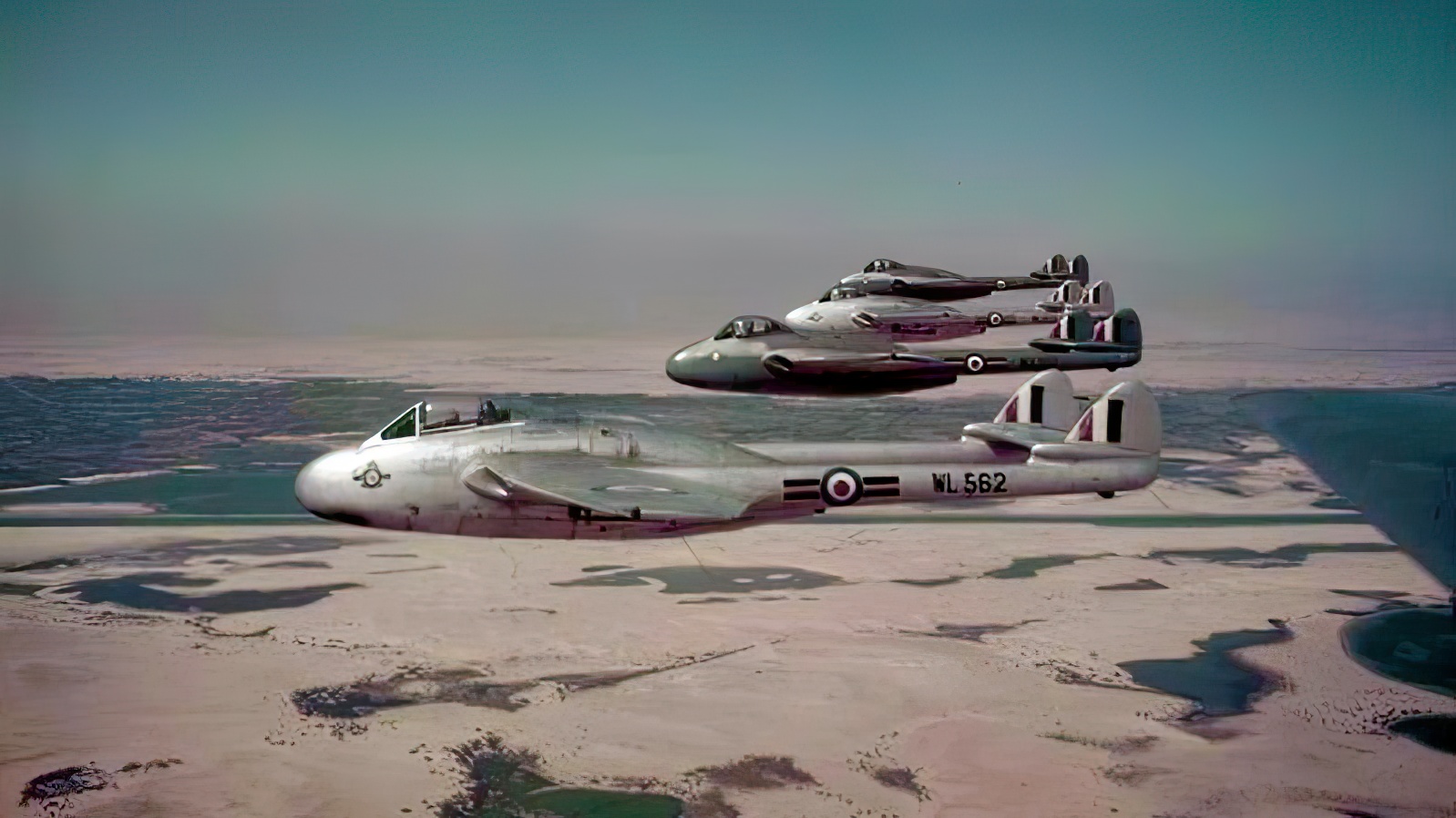
Retirement
In the late 1960s and early 1970s, the de Havilland Vampire was retired from military service as newer and more advanced aircraft began to replace it. However, until the 1980s and 1990s, many air forces worldwide continued to use aircraft for secondary functions, such as advanced training.
In 1966, the Royal Air Force of the United Kingdom retired its last Vampires and replaced them with contemporary Hawker Hunter jet fighters. Other air forces, including the Swiss Air Force, which operated Vampires until 1990, continued to use the aircraft. In addition, the Vampire remained popular on the private market, with several examples converted for civilian use as recreational planes or airshow aircraft.
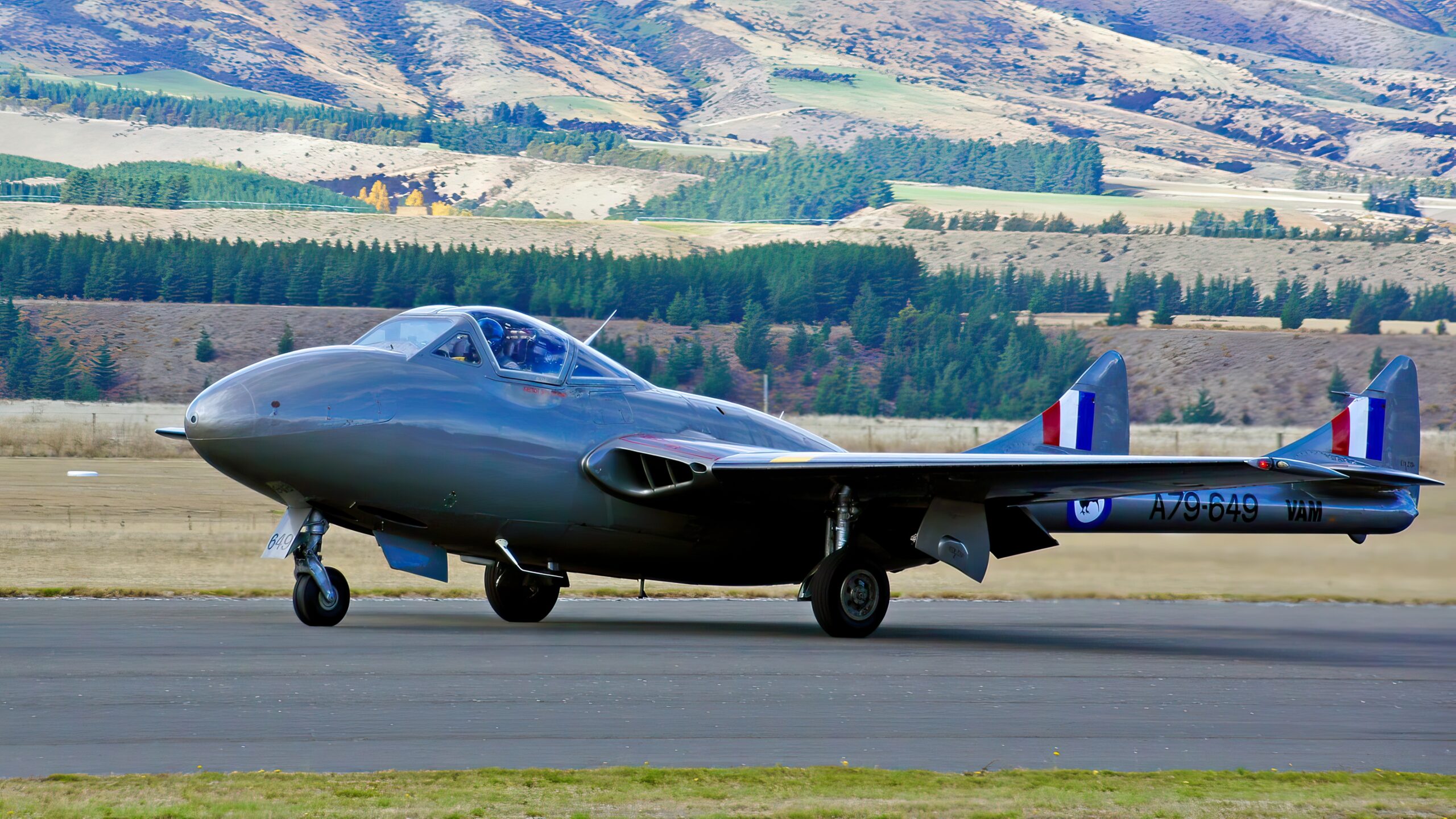
Today, some de Havilland Vampires can be found in museums and private collections around the globe. Its innovative design and considerable contribution to the development of jet-powered aircraft make it one of the most important fighter aircraft of the post-World War II era.

